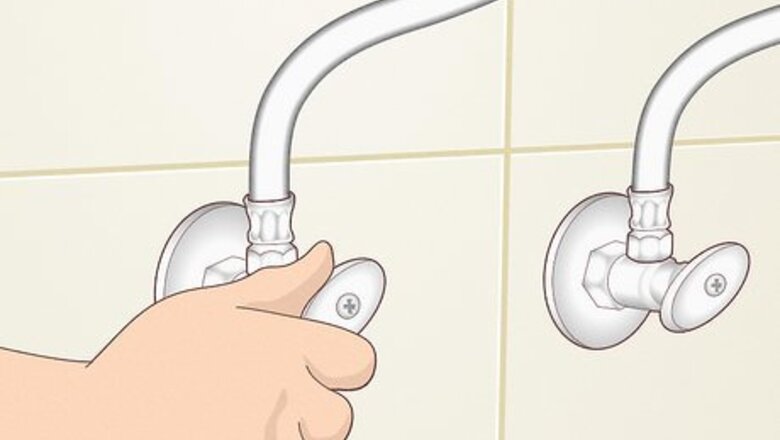
views
Disassembling a Bathroom Sink Faucet
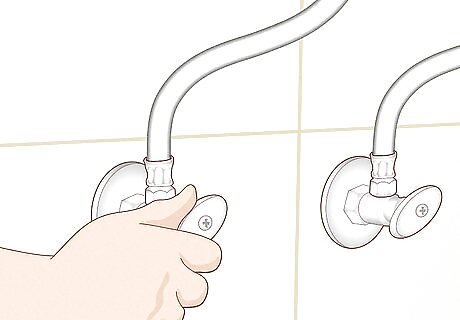
Turn off the water that runs to the sink. Open the cabinet under the sink and you'll see the shutoff valves. Since you have 2 handles, you'll likely also have 2 shutoff valves—left for hot and right for cold. Shut them off one at a time, then see if your leak stops. That'll tell you which handle is the culprit. Even if only one handle is leaky, it might be worth your time to go ahead and replace the parts in both of them. If they're both the same age and one of them is leaking, it's only a matter of time before the other one starts leaking as well.

With the water shut off, open the tap completely. This clears any of the water that was already in the pipes before you turned the water off (there shouldn't be much). You might still have a drip or two, but it'll be fine.
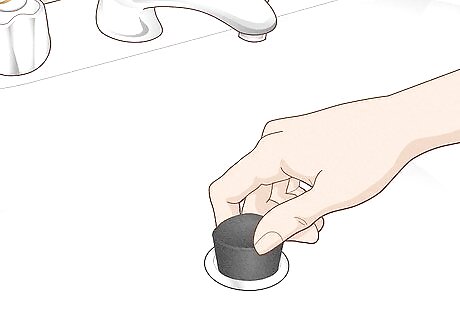
Plug the sink drain or cover it with a towel. This keeps any screws or small parts from accidentally falling down the drain. A towel also protects the finish of your sink if you happen to drop a tool you're using.
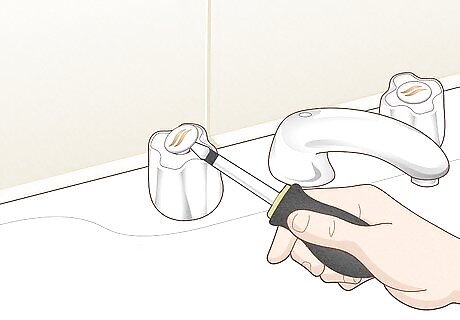
Remove the decorative caps from each of the handles. Some of these caps simply twist off, while others have a plastic cap you need to pop out first. Use the tip of a nail file or other slender object to get under the cap and pop it off. If you can't figure out how to get the handles apart, search the brand name of the faucet to find the instruction guide online. It'll tell you what you need to do. Cover polished surfaces with masking tape before you take them off.
Fixing a Leaky Cartridge Faucet
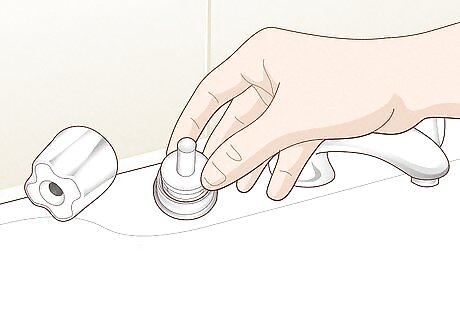
Unscrew the retainer nuts to get to the cartridges. Use a set of pliers to loosen the nut first if it's tight. Then, unscrew it the rest of the way with your fingers and set it out of the way.
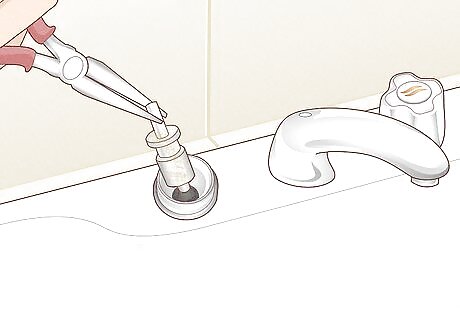
Pull out the cartridges with long-nose pliers. Grip the sides of the cartridge securely and slide it upward. If you feel resistance when you pull upward, twist it a quarter-turn in either direction to loosen it, then try again. Some cartridges require a special cartridge-removal tool. If you're trying to get it out with pliers and having a hard time, search your faucet brand on the internet to find an instruction guide. If a special tool is needed, it'll tell you.

Take the old cartridges to a hardware store to buy replacements. Expect each cartridge to cost between $10 and $80 depending on the brand. If you have the instruction manual for your faucet, copy down the part number for the cartridge as well.
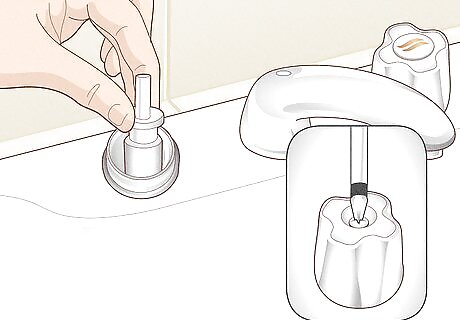
Put the new cartridges in place and screw the handles back on. Slot the cartridge back into place the same way the old one was. Once it's straight and locked in place, screw the retainer nut back on top.
Repairing a Leaky Ceramic Disk Faucet

Remove the handle "bonnets." These decorative covers typically just pull off. If it's stuck on there, give it a twist and see if it screws on instead.
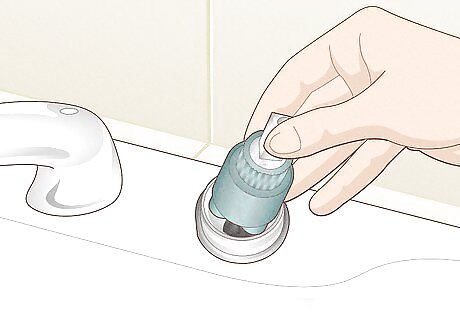
Pull out the ceramic stems and seals on the underside. Use a knife-point or pliers to pry out the seals. The replacement stem comes with new seals, so you can throw the old ones away. If you notice dirt build-up or debris in the faucet, clean it out with some basic bathroom cleaner or a damp rag dipped in white vinegar.

Take the ceramic stems to a hardware store to buy replacements. Ceramic stems typically cost between $15 and $50 to replace. If you take the old one with you, it'll be easier to match it up with a replacement. You can also check your faucet's user manual for a specific part number.
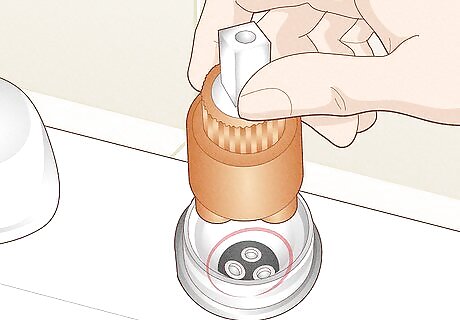
Drop the neoprene seal in place, then set the stem on top. The correct stem will slot right into place. You might have to twist the stem a quarter-turn one way or the other to seat it properly.

Put the handles back together. Add on each of the parts in the reverse order that you removed them. Then turn the water back on and test your handles—you should be drip-free.
Stopping a Leak in a Compression Faucet
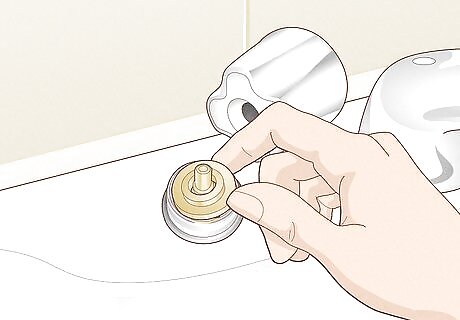
Remove the handles and packing nuts. You might need pliers to loosen the nut, although you should be able to unscrew it with just your fingers. Hold on to the valve stem while you turn the nut to keep it steady.
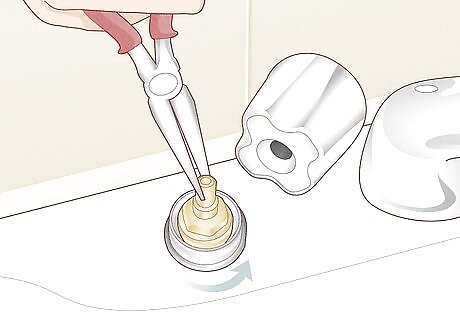
Turn the valve stems counter-clockwise to unscrew them. Use pliers to hold the valve stem if you can't get a good grip on it with your fingers. After a few turns, you should be able to pull the entire thing completely out.
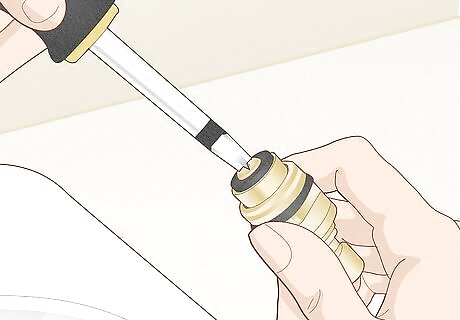
Unscrew the screw holding the washer on the bottom of the valve stem. Turn this screw slowly and carefully, as it's likely to break apart if it's worn or corroded. With the screw off, the washer will just fall off on your hand. Hang onto it so you can match it up with a replacement at the hardware store.

Take the washer and screw to your local hardware store. Get replacements that are the exact same size, shape, and thickness as the old one. They shouldn't cost you more than a few dollars.

Install the new washers and screws in the stems. Set the washer on the end of the stem, then slowly turn the screw to tighten it so it holds the washer in place. Hold the stem tightly to keep it from turning.
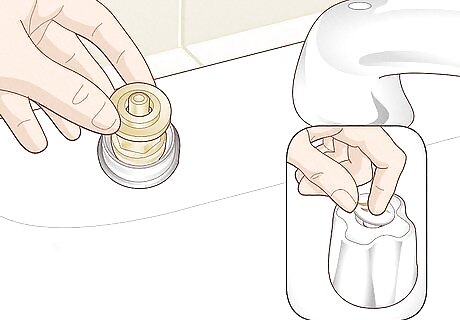
Put the stem back into the faucet housing and reassemble the handle. Make sure the stem is straight as you set it back into the housing, then screw it back in. Set the packing nut on top and screw it on tight. You might want to lubricate the stem with a little plumber's grease before you put it back into the housing. This isn't strictly necessary, so if you don't have any, don't worry.












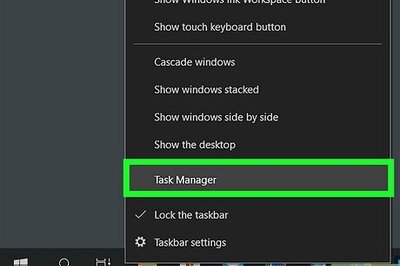


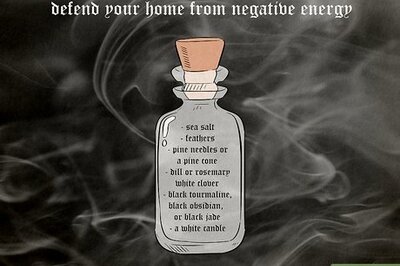




Comments
0 comment